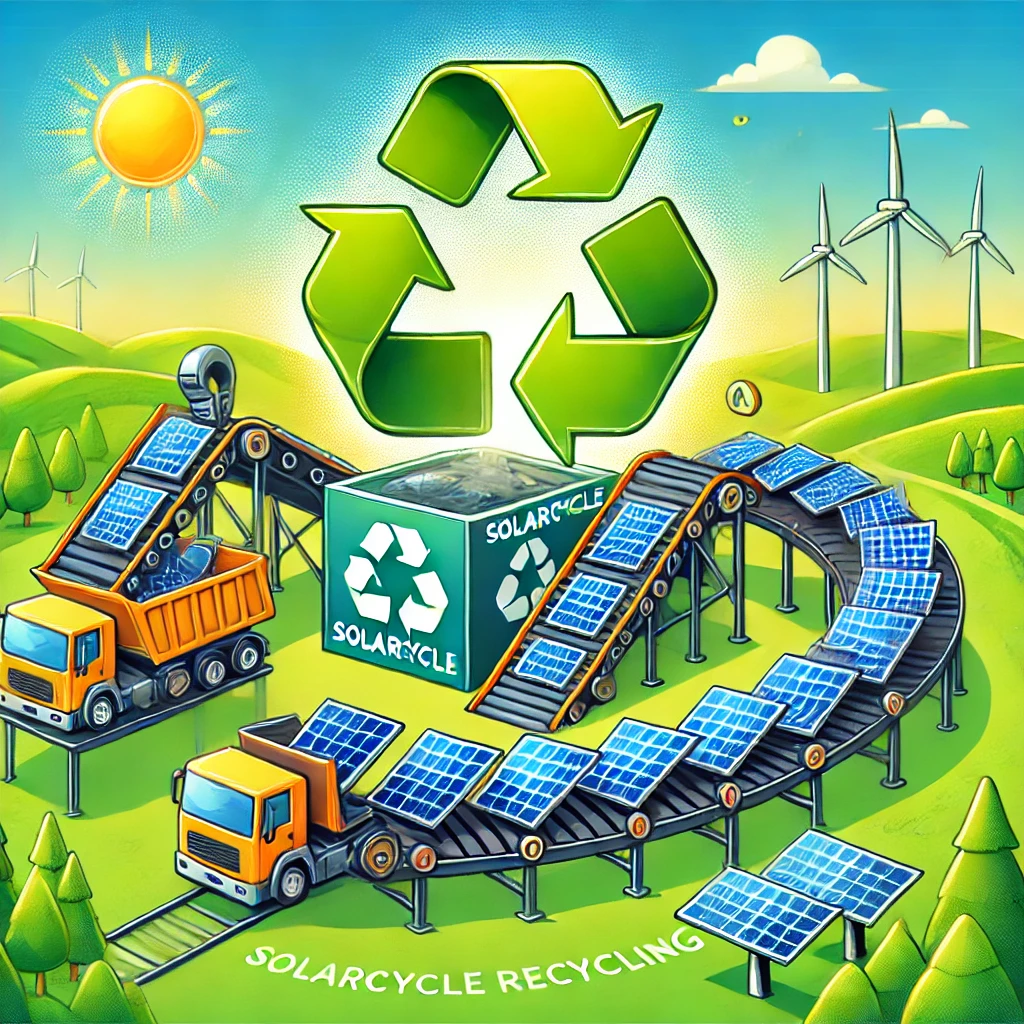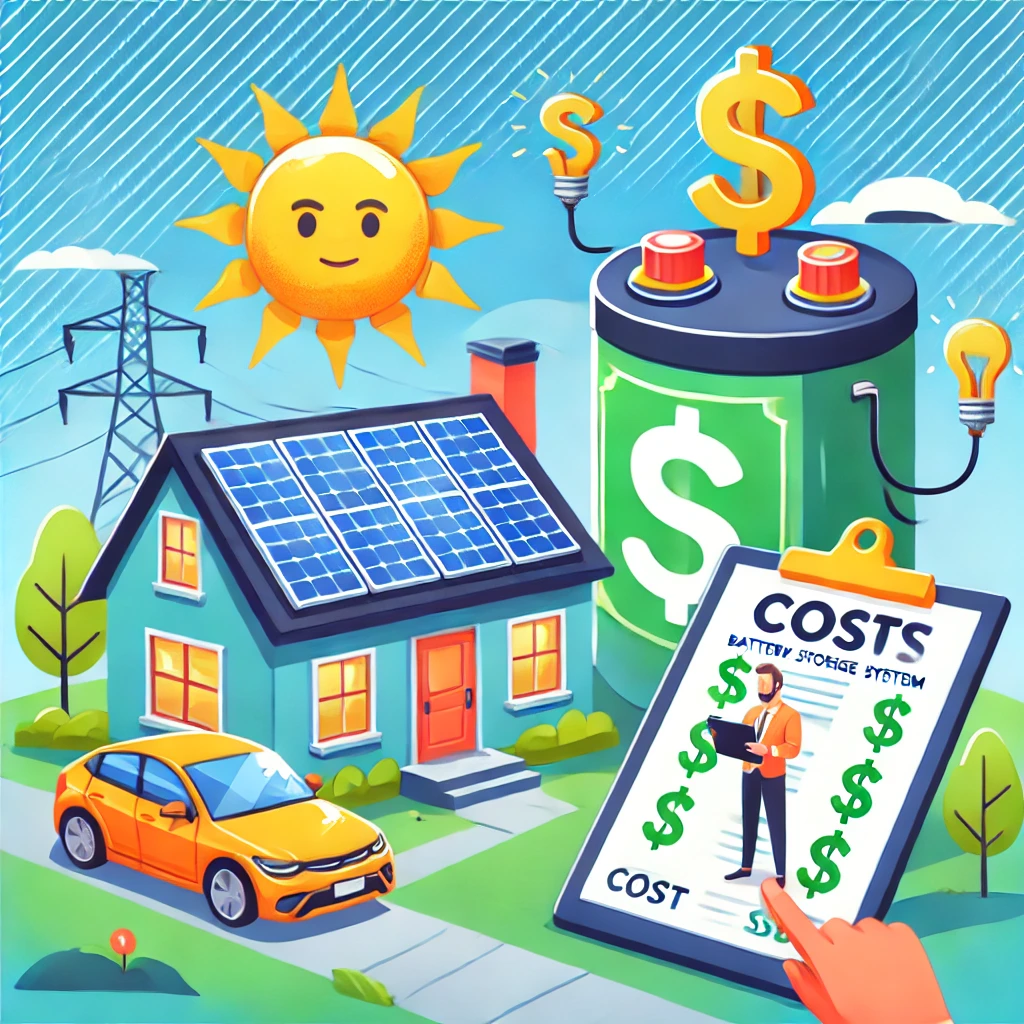As the global adoption of solar energy continues to accelerate, a new challenge has emerged: managing the disposal of solar panels at the end of their lifespan. Enter SolarCycle, a pioneering company dedicated to addressing this challenge through innovative recycling technologies and sustainable practices. By focusing on high-efficiency material recovery, SolarCycle is transforming the way we handle solar panel waste, contributing to a cleaner, greener future. In this article, we’ll explore the origins of SolarCycle, how their recycling process works, and why they are a leader in solar panel waste management.
The Growing Need for Solar Panel Recycling
Solar panels typically last between 25 and 30 years. As the first wave of large-scale solar installations from the early 2000s approaches the end of its lifespan, the industry is facing a surge in decommissioned panels. Without proper disposal methods, these panels could contribute to environmental pollution and waste.
Why Solar Panel Recycling Matters:
- Environmental Protection: Prevents hazardous materials like cadmium and lead from contaminating soil and water.
- Resource Recovery: Recovers valuable materials such as silicon, silver, aluminum, and copper.
- Sustainability: Reduces the need for new raw materials, supporting a circular economy.
- Regulatory Compliance: Helps meet environmental regulations and avoid fines.
Introducing SolarCycle: A Leader in Solar Recycling
SolarCycle was founded with a mission to create a sustainable solution for the growing problem of solar panel waste. By leveraging cutting-edge technology and a commitment to environmental stewardship, SolarCycle has positioned itself as a leader in the solar recycling industry.
SolarCycle’s Mission and Vision:
- Mission: To revolutionize solar panel recycling through innovative technologies that maximize material recovery and minimize environmental impact.
- Vision: A future where solar energy remains sustainable from production to disposal, contributing to a circular economy and a cleaner planet.
How SolarCycle Recycling Works
SolarCycle’s recycling process is designed to recover the maximum amount of valuable materials from decommissioned solar panels. Their proprietary technologies ensure high-efficiency material recovery while minimizing waste.
Step-by-Step SolarCycle Recycling Process:
- Collection and Transportation:
- Solar panels are collected from decommissioned sites, residential homes, and commercial solar farms.
- Specialized transportation ensures safe delivery to SolarCycle’s recycling facilities.
- Initial Assessment and Sorting:
- Panels are inspected and sorted based on type (silicon-based, thin-film, etc.) and condition.
- Functional panels may be refurbished for resale, while non-functional panels proceed to recycling.
- Disassembly:
- Frames, junction boxes, and other external components are removed.
- Metals like aluminum and copper are separated for recycling.
- Material Separation:
- Silicon-Based Panels:
- Glass is separated and cleaned for reuse.
- Silicon wafers are extracted, refined, and prepared for reuse in new panels.
- Precious metals like silver and copper are recovered from the cells.
- Thin-Film Panels:
- Chemical processes separate cadmium, tellurium, and other materials.
- Silicon-Based Panels:
- Purification and Repurposing:
- Extracted materials are purified to meet industry standards.
- Recovered materials are sold back to manufacturers for use in new solar products.
Why SolarCycle Stands Out in the Industry
SolarCycle’s approach to solar panel recycling sets them apart from other companies in the industry. Their commitment to sustainability, innovation, and efficiency has made them a trusted partner for solar manufacturers, utility companies, and government agencies.
Key Features of SolarCycle:
- Proprietary Recycling Technologies: Advanced methods that maximize material recovery rates.
- High-Purity Material Recovery: Ensures that recovered materials meet the highest quality standards.
- Sustainable Practices: Commitment to zero-waste processes and environmental stewardship.
- Partnerships with Industry Leaders: Collaborations with solar manufacturers and energy companies to promote sustainable practices.
SolarCycle’s Impact on the Environment and Economy
By focusing on efficient solar panel recycling, SolarCycle contributes to both environmental protection and economic growth. Their efforts help reduce waste, conserve natural resources, and create new opportunities in the recycling and manufacturing sectors.
Environmental Benefits:
- Reduction in Landfill Waste: Diverts solar panels from landfills, preventing environmental contamination.
- Conservation of Resources: Reduces the need for raw material extraction, lowering the carbon footprint of new solar panels.
- Promotion of a Circular Economy: Supports the reuse of materials in new products, reducing overall environmental impact.
Economic Benefits:
- Job Creation: Generates employment opportunities in the recycling and manufacturing sectors.
- Cost Savings for Manufacturers: Provides a reliable source of high-quality recycled materials, reducing production costs.
- Support for Local Economies: Collaborations with local businesses and governments promote economic growth.
Challenges and Opportunities in Solar Panel Recycling
While SolarCycle has made significant strides in solar panel recycling, the industry still faces challenges that need to be addressed to ensure long-term sustainability.
Major Challenges:
- High Recycling Costs: The cost of recycling can be higher than landfill disposal, though environmental regulations are making landfilling less viable.
- Complexity of Materials: Solar panels contain a mix of materials that require specialized recycling processes.
- Limited Infrastructure: In many regions, there are not enough recycling facilities to meet the growing demand.
- Regulatory Gaps: Inconsistent regulations across countries can hinder recycling efforts.
Opportunities for Growth:
- Technological Innovations: Continued advancements in recycling technology will improve efficiency and reduce costs.
- Government Support: Policies and incentives can promote recycling initiatives and support the growth of the industry.
- Increased Industry Collaboration: Partnerships between manufacturers, recyclers, and governments can drive sustainable practices.
The Future of SolarCycle and Solar Recycling
As the solar industry continues to expand, the need for efficient recycling solutions will become even more critical. SolarCycle is well-positioned to lead this charge, with ongoing investments in technology, infrastructure, and partnerships.
What’s Next for SolarCycle:
- Expansion of Recycling Facilities: Plans to open new facilities to meet growing demand.
- Technological Advancements: Continued research and development to improve recycling efficiency.
- Global Partnerships: Collaborations with international organizations to promote sustainable solar practices worldwide.
- Community Engagement: Initiatives to raise awareness about the importance of solar panel recycling and encourage public participation.
Conclusion
SolarCycle is revolutionizing the way we manage solar panel waste, turning a potential environmental challenge into an opportunity for sustainability and growth. Through innovative recycling technologies and a commitment to environmental stewardship, SolarCycle is ensuring that the solar industry remains sustainable from production to disposal. As solar energy adoption continues to rise, SolarCycle’s role in supporting a cleaner, greener future will only become more important.
By understanding and supporting companies like SolarCycle, we can all contribute to a more sustainable world—one solar panel at a time.




